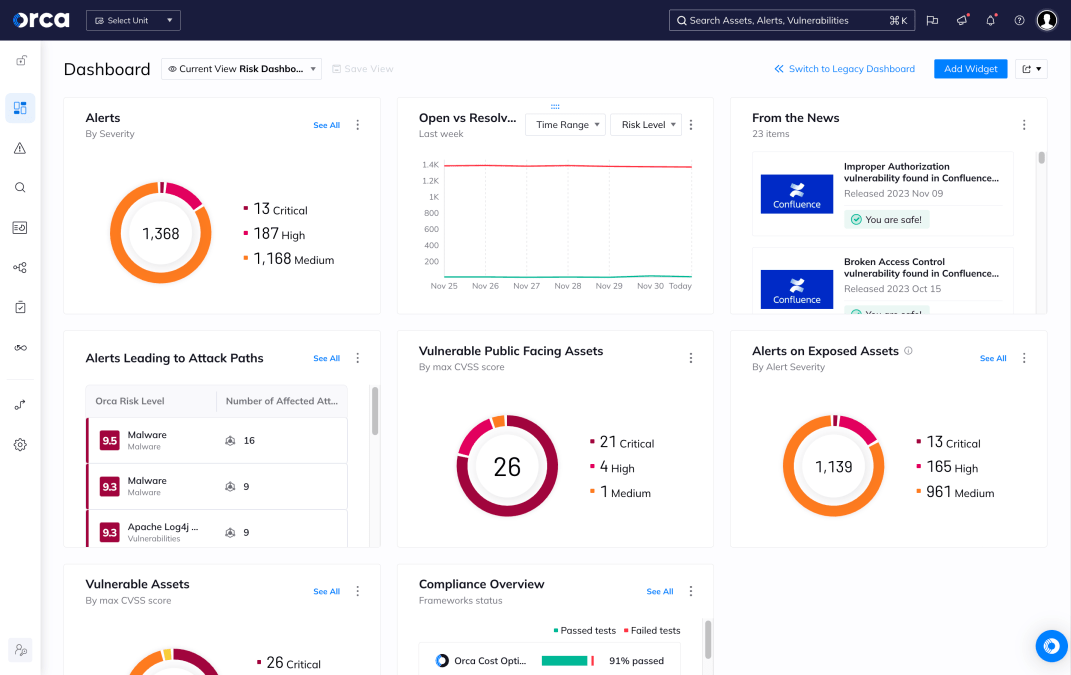Cyber risk assessment is a structured process used to identify, evaluate, and prioritize potential security threats and vulnerabilities within an organization’s digital environment. This foundational security practice allows organizations to measure risk across systems, applications, cloud infrastructure, and user behavior, enabling better-informed decisions about how to allocate resources, mitigate risks, and comply with regulations. In an era defined by hybrid work, multi-cloud adoption, and increasingly sophisticated cyberattacks, cyber risk assessment is essential for maintaining resilience and defending critical business operations.
What is cyber risk assessment?
Cyber risk assessment is the process of systematically identifying all digital assets and evaluating their exposure to known and potential threats. This includes understanding how various vulnerabilities, misconfigurations, and user behaviors could be exploited, and what the impact would be on the business. Cyber risk assessment considers the likelihood of different types of attacks (e.g., ransomware, insider threats, supply chain attacks) and the severity of their impact on confidentiality, integrity, and availability.
Rather than relying solely on technical metrics, risk assessments contextualize exposures based on business impact. For example, a low-severity vulnerability in a public-facing application that processes sensitive data may represent a greater risk than a high-severity vulnerability on a non-critical internal system.
Modern assessments typically incorporate both qualitative and quantitative methodologies. Qualitative assessments use categories like “high,” “medium,” or “low” to describe risk, while quantitative models aim to estimate financial impact using formulas or simulations.
Why cyber risk assessment matters
Organizations that lack structured risk assessments often operate without a clear understanding of where their greatest security risks lie. This leads to misallocated resources, inefficient security programs, and heightened exposure to cyber incidents.
Cyber risk assessment provides several important benefits:
- Improved prioritization: Helps security teams focus on the vulnerabilities and threats most likely to impact the business.
- Informed decision-making: Supports executives and stakeholders in allocating budgets and approving investments in the most critical areas.
- Compliance readiness: Enables organizations to meet regulatory requirements from frameworks such as PCI DSS, NIST CSF, HIPAA, GDPR, and ISO/IEC 27001.
- Business continuity: Identifies gaps in controls or recovery processes that could disrupt operations during an attack.
The need for continuous and cloud-aware risk assessments is especially important today. Cloud environments evolve constantly, often introducing new resources and misconfigurations within minutes. Static or point-in-time assessments are no longer sufficient.
How cyber risk assessment works
While specific methodologies may vary, most cyber risk assessments follow these steps:
- Asset discovery and classification: Identify all systems, applications, cloud resources, and data assets. Classify them based on sensitivity, business value, and regulatory impact.
- Threat modeling: Define and document potential threat actors and scenarios relevant to the organization, including external attackers, insiders, supply chain risks, and advanced persistent threats (APTs).
- Vulnerability analysis: Scan for known vulnerabilities, misconfigurations, and weaknesses in cloud services, applications, and network architecture. Include assessments of IAM policies, exposed endpoints, and secrets.
- Risk calculation: Combine threat likelihood with potential business impact to assign a risk score or rating to each identified scenario. Use CVSS, FAIR, or proprietary scoring models as appropriate.
- Prioritization and reporting: Organize risks by severity and develop a remediation roadmap. Present findings in a format suitable for both technical teams and executive stakeholders.
- Ongoing monitoring: Continuously reassess risk as the environment and threat landscape evolve. Automation plays a key role in maintaining an up-to-date risk posture.
Challenges and risks
Several challenges can limit the effectiveness of cyber risk assessments:
- Cloud complexity: With resources spread across multiple providers and ephemeral workloads, it can be difficult to maintain visibility into the entire environment.
- Shadow IT: Unmanaged assets, such as unauthorized cloud instances or SaaS accounts, create blind spots in assessments.
- Scale and resource constraints: Large organizations may have thousands of assets. Manual processes become inefficient, and tooling must be scalable.
- Human error and misconfiguration: Misconfigured IAM policies, open storage buckets, or hardcoded secrets are among the most common risks.
- Lack of context: Traditional scanners often produce long lists of vulnerabilities without showing which pose the highest business risk.
To address these limitations, organizations must pair automated tools with contextual analysis and maintain close collaboration across security, IT, and business units.
Best practices for effective assessments
Organizations looking to improve their cyber risk assessments should follow these best practices:
- Automate asset discovery: Use tools that continuously identify and classify assets in real time across cloud, hybrid, and on-prem environments.
- Incorporate threat intelligence: Align risk scenarios with current attacker techniques, such as those documented in the MITRE ATT&CK framework.
- Include business stakeholders: Gather input from risk managers, legal, and compliance teams to ensure assessments are aligned with business objectives.
- Leverage risk-based prioritization: Go beyond CVSS scores by considering exploitability, data sensitivity, internet exposure, and blast radius.
- Validate through red teaming and pen testing: Use adversarial simulations to test assumptions and uncover gaps in the risk model.
- Integrate results into broader workflows: Feed assessment data into SIEM, SOAR, and ticketing platforms to drive remediation and incident response.
How Orca Security helps
The Orca Cloud Security Platform empowers organizations to conduct comprehensive cyber risk assessments by providing deep, complete, continuous visibility across cloud infrastructure and workloads. Orca automatically discovers and evaluates all assets—compute instances, containers, databases, storage, and identities—and correlates them with vulnerabilities, misconfigurations, and other types of risks, including compliance issues.
Orca also prioritizes findings based on a comprehensive set of dynamic factors that indicate true severity and business impact. The Orca Platform automatically maps security findings to more than 185 built-in compliance frameworks, which automate and accelerate multi-cloud compliance tracking, monitoring, and reporting. Organizations can also customize these built-in controls to meet their unique needs.By combining full-stack visibility with context-rich risk prioritization, Orca Security provides everything organizations need to execute effective cyber risk assessments in complex, cloud-first environments.



